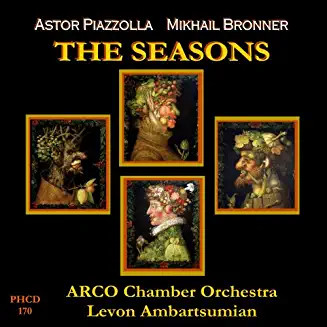
Piazzola, Astor
Astor Piazzolla is widely considered the most important Argentine tango composer of the second half of the twentieth century. A virtuoso bandoneonist, Piazzolla performed his own compositions with many different ensembles, developing the nuevo tango style- a fusion of traditional Argentine tango, jazz, and such compositional techniques as extreme chromaticism and fugal elements. While this new style was not immediately accepted by Argentine tango composers and performers, Piazzolla was eventually recognized as a savior of tango, with his popularity growing both in Argentina and abroad. Astor Pantaleon Piazzolla was born in southern Argentinean city of Mar del Plata in 1921. In 1924 Astor and his family moved to New York City, where he was exposed to both jazz and classical music, also learning to play the bandoneon. In 1937 Piazzola returned to Argentina, where he studied classical composition with Alberto Ginastera. It was upon Ginasteras encouragement that Piazzolla entered his newly composed symphony in a composition contest that won him a grant to study composition with the legendary Nadia Boulanger in Paris. After returning to Argentina in 1955, Piazzolla formed his own groups to play tango – first the Octeto Buenos Aires, and later Quinteto Nuevo Tango. Until his death in 1992, Piazzolla lived and composed in Argentina, France, and Italy, producing a large body of over 750 compositions, including film scores, symphonic works, and numerous shorter works for smaller ensembles.
